 June 3, 2021 John E. Ross, KD8IDJ, Editor
| ||||||
Next Virtual Ham Events Include SEA-PAC and QSO Today Ham Expo The 2021 SEA-PAC virtual convention is Saturday, June 5. The event, billed as the ARRL Northwestern Division Convention, includes free live and prerecorded video presentations and seminars. Advance registration via Zoom is required. The program begins at 9 AM PDT (1600 UTC) with keynote speaker ARRL CEO David Minster, NA2AA.
The affiliated 2021 SEA-PAC QSO Party, will take place Saturday and Sunday, June 5 - 6. The objective is to encourage radio amateurs in the Pacific Northwest and beyond to work as many stations as possible in celebration of the annual SEA-PAC ham radio conventions, past and future. SEA-PAC is sponsored by the Oregon Tualatin Valley Amateur Radio Club and co-sponsored by the Clark County Amateur Radio Club. Following 2 years of canceled in-person events, Chairman John Bucsek, KE7WNB, says the event is looking forward to its 40th anniversary convention next year (June 3 - 5, 2022) at the newly remodeled and expanded Seaside (Oregon) Convention Center. Also just ahead is the QSO Today Virtual Ham Expo, readying its third show since the online format debuted last year. It takes place August 14 - 15. Organizers have issued a casting call for radio amateurs who After the inaugural show in August 2020, the expo's sponsors announced that the show would become a twice-yearly event, in March and August. The March 2021 edition attracted thousands of visitors, although it was plagued by some technical issues. Expo chairman Eric Guth, 4Z1UG/WA6IGR, has assured that this August show's return to a single virtual presentation platform should make everything work smoothly. Guth says he already has more than 40 presentations lined up, with a goal of more than 80. Presentations will be offered "semi-live," with the main content pre-recorded and Q&A sessions conducted live online, using Zoom. QSO Today has offered resources for presenters and speakers on its website. For this show, the QSO Today sponsors are looking for presenters and speakers who will focus on a single topic -- taking a "TED Talk" approach. Early bird tickets to the QSO Today Virtual Ham Expo are $10, and then $12.50 starting on August 13. The ARRL Hamfest and Convention page lists upcoming virtual and in-person hamfests, conventions, and flea markets, and it includes a search engine. Interactive LightCube Satellite Set to Launch in Late 2022 NASA has selected LightCube, along with 13 other small research satellites, to fly as auxiliary payloads aboard rockets launching between 2022 and 2025. The launch opportunity is provided through NASA's CubeSat Launch Initiative. Being designed, built, and tested by an interdisciplinary team of students, advisors, and engineers across multiple organizations, LightCube is a microsatellite educational When the light beacon is activated, the 1U CubeSat will be visible momentarily -- each flash will take 8 microseconds -- from the ground, with a brightness similar to the International Space Station (ISS). Following ISS deployment, LightCube will orbit Earth for approximately 2 years before safely deorbiting. The LightCube mission is a collaborative project between Arizona State University's (ASU) Interplanetary Initiative, the ASU Ira A. Fulton Schools of Engineering, Vega Space Systems, and CETYS (Centro de Enseñanza Técnica y Superior) Universidad. ASU designed and built A radio amateur with a handheld transceiver will wait until the satellite is roughly overhead, as determined by a smartphone or computer app. The user will transmit a predefined number code, and if LightCube is charged, it will flash. The satellite then requires 30 seconds to recharge the capacitor that fires the xenon light tubes. At this point, no frequencies have been coordinated for LightCube. The idea itself is not novel. As the LightCube sponsors note, FITSat in 2013 used high-power LEDs to transmit Morse code. EQUisat in 2016 could produce a beacon visible to the naked eye. ARRL Podcasts Schedule
The latest edition of Eclectic Tech (Episode 35) features a conversation with Patrick Stoddard, The On the Air and Eclectic Tech podcasts are sponsored by Icom. Both podcasts are available on iTunes (iOS) and Stitcher (Android), as well as on Blubrry -- On the Air | Eclectic Tech. Radio Amateurs of Canada Invites Participation in the RAC Canada Day Contest Help Canada celebrate its birthday on the air during the RAC Canada Day Contest on Thursday, July 1 -- just a few days ahead of Independence Day in the US. Canada Day is the anniversary of Canada's confederation, when the three colonies of Canada, Nova Scotia, and New Brunswick united into the Dominion of Canada on July 1, 1867. The RAC Contest Committee is asking all participants in The Canada Day Contest begins on July 1, 0000 UTC (the evening of Wednesday, June 30, in North American time zones) and continues through 2359 UTC. Bands include 160, 80, 40, 20, 15, 10, 6, and 2 meters, CW and phone (SSB, FM, AM, etc.). Stations in Canada send signal report plus province or territory. VE0s and stations outside Canada send a signal report and a serial number. Stations may be worked once on each mode on each of the available bands. Canada's 10 provinces and three territories serve as multipliers for the event. Netherlands Repeaters and Beacons to be Hit with 79 Euro Charge
Elsewhere, a new 8-meter propagation beacon, call sign EI1CAH, is now on the air from the west of Ireland on 40.016 MHz. The new beacon will transmit in both CW and PI4 modes with an output power of 25 W into a horizontal dipole. According to the announcement, the new 40 MHz beacon is designed to explore the possibility of VHF paths across the Atlantic, and it may prove a useful propagation for 50 MHz operators in North America looking for openings to Europe. The beacon has the potential to be heard in the Americas and the Caribbean. Visit EI7GL's blog for more information. IARU Continues World Radiocommunication Conference 2023 Preparations IARU Region 1 Spectrum Affairs Chair Barry Lewis, G4SJH, reports that efforts continue in defending the interests of amateur radio during preparations by CEPT -- the European Conference of Postal and Telecommunications Administrations -- for World Radiocommunication Conference 2023 (WRC-23). The International Telecommunication IARU put forward the agreed preliminary IARU positions for agenda items that could affect amateur radio. IARU's overall objective is to safeguard the allocations to the Amateur and Amateur Satellite Services in the co- and adjacent-frequency bands within the scope of each agenda item. CEPT Briefs include a specific section in which the views of all the recognized international and regional organizations can be placed, and IARU's views are now in this section of the draft briefs for each agenda item of interest. The meeting also heard presentations from other Region 1 RTOs, as well as organizations from Region 2 and Region 3 about their preparations. These presentations and the CEPT meeting document drafts are available via the CEPT website. The IARU Spectrum and Regulatory Liaison Committee (SRLC) continues to be active in all the CEPT project teams dealing with the WRC preparation. Read the SRLC Report on the CPG meeting. See a list of the CPG Project Teams and applicable WRC-23 Agenda Items. In other IARU news, IARU member-societies have voted to admit new members representing amateur radio interests in Kyrgyzstan and Bahrain. The Amateur Radio Union of the Kyrgyz Republic (ARUKR) and the Amateur Radio Society of Bahrain (ARAB). Amateur Radio in the News ARRL Public Information Officers, Coordinators, and many other member-volunteers help keep amateur radio and ARRL in the news.
Share any amateur radio media hits you spot with us. IARU Regions Adopt Standard "Branding," Region 2 Mulls Future Conference Meetings The International Amateur Radio Union Region 2 (IARU-R2 -- the Americas) Executive Committee (EC) conducted its quarterly meeting on May 26 via Zoom. President Ramon Santoyo, XE1KK, moderated IARU reports that the EC formally adopted an IARU branding policy. This means that all three IARU regions and member-societies will use the same gold IARU logo "to create a common unified identification of all IARU activities," IARU said. The EC set a deadline for all member-societies that have not already adopted the gold logo to do so by December 31, 2021. Other discussion at the EC session focused on the impact of the COVID-19 pandemic on 2022 General Assembly meeting planning. "It is now clear that all future general meetings and workshops will need to be planned as either all virtual events or as a hybrid event with attendance both in-person and remote," the meeting report said. The EC concluded that it is too soon to make any decisions about 2022, given the uncertain future of travel and infection controls throughout the world. The IARU Administrative Council will meet on June 8. In other matters:
ARRL Learning Network Webinars Visit the ARRL Learning Network (a members-only benefit) to register, check on upcoming webinars, and view previously recorded sessions. Improving Your Club's 2021 Field Day Score -- Paul Bourque, N1SFE, ARRL Contest Program Manager / Thursday, June 10, 8 PM EDT (0000 UTC on Friday, June 11). Learn how your club or group can take advantage of the 2021 ARRL Field Day rules waivers for operating as Class D or E from home. We'll discuss how individuals or groups can boost their scores by earning bonus points, review how to use the Field Day web applet to submit Antenna Zoning Part 1: Permitting in a Nutshell -- Fred Hopengarten, K1VR. A special six-part webinar series being presented by Fred Hopengarten, K1VR, author of Antenna Zoning for the Radio Amateur. Don't let the confusing tangle of ordinances and bylaws keep you from installing the antenna you need in order to communicate effectively.
Introduction to Remote HF Operation -- Davide Lanfranconi, W6DGE, and Kevin Shin-Wheeler, N7KSW, Cal Poly Amateur Radio Club / Tuesday, June 22, 1 PM EDT (1700 UTC). Lanfranconi and Shin-Wheeler will discuss the idea, process, and challenges encountered while getting their club's remote HF station on the air, as well as some methods and resources available for those with a similar interest. A Q&A session and live demo are included. ARRL members may register for upcoming presentations and view previously recorded Learning Network webinars. ARRL-affiliated radio clubs may also use the recordings as presentations for club meetings, mentoring new and current hams, and discussing amateur radio topics. These Learning Network presentations are sponsored by PreppComm.
The ARRL Learning Network schedule is subject to change. Announcements
In Brief...
The K7RA Solar Update Tad Cook, K7RA, Seattle, reports: Solar Cycle 25 activity continues this week, with no spotless days since May 6. The average daily sunspot number rose modestly this week from 24.9 to 28, and average daily solar flux held steady at 77.8.
Predicted planetary A index is 8 on June 3 - 4; 5 on June 5 - 15; 20 and 10 on June 16 - 17; 5 on June 18 - 27; 8, 5, 8, and 8 on June 28 - July 1, and 5 on July 2 - 12. Here's an interesting article on solar cycle prediction: "Will the next space-weather season be stormy or fair?" Sunspot numbers for May 27 - June 2, 2021, were 34, 28, 26, 27, 31, 20, and 30, with a mean of 28. The 10.7-centimeter flux was 83.3, 77.4, 76, 74.4, 81.7, 75.2, and 76.3, with a mean of 77.8. Estimated planetary A indices were 16, 3, 7, 6, 3, 3, and 5, with a mean of 6.1. Middle latitude A index was 15, 3, 7, 7, 4, 3, and 5, with a mean of 6.3. A comprehensive K7RA Solar Update is posted Fridays on the ARRL website. For more information concerning radio propagation, visit the ARRL Technical Information Service, read "What the Numbers Mean...," and check out K9LA's Propagation Page. A propagation bulletin archive is available. For customizable propagation charts, visit the VOACAP Online for Ham Radio website. Share your reports and observations. Just Ahead in Radiosport
Upcoming ARRL Section, State, and Division Conventions Many conventions and hamfests have been canceled or postponed due to the coronavirus pandemic. Check the calendar of canceled events on the ARRL website.
Find conventions and hamfests in your area.
ARRL -- Your One-Stop Resource for . .
Subscribe to...
Free of charge to ARRL members...
| ||||||
-horizontal.PNG) Some webinar topics include reporting earthquakes using Winlink, trends in 6-meter EME (Earth-moon-Earth communications), and information about ARRL Foundation Scholarships that support young radio amateurs pursuing higher education. The ARRL Forum -- open to all -- will be held at 10 AM PDT, led by Northwestern Division Director Mike Ritz, W7VO.
Some webinar topics include reporting earthquakes using Winlink, trends in 6-meter EME (Earth-moon-Earth communications), and information about ARRL Foundation Scholarships that support young radio amateurs pursuing higher education. The ARRL Forum -- open to all -- will be held at 10 AM PDT, led by Northwestern Division Director Mike Ritz, W7VO. 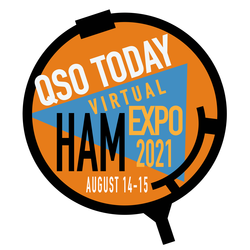 may have some particular knowledge, project, or technique to share with attendees. ARRL is a QSO Today Virtual Ham Expo partner.
may have some particular knowledge, project, or technique to share with attendees. ARRL is a QSO Today Virtual Ham Expo partner.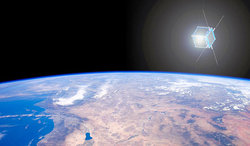 mission that aims to produce a light visible to the naked eye of observers on Earth. The spacecraft's two xenon flashtubes will be triggered via amateur radio.
mission that aims to produce a light visible to the naked eye of observers on Earth. The spacecraft's two xenon flashtubes will be triggered via amateur radio.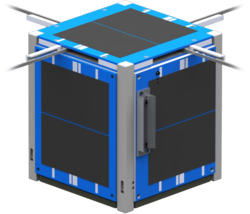 the satellite.
the satellite..jpg) The latest episode of the On the Air podcast (Episode 17) features a discussion with Ward Silver, N0AX, about the importance of station grounding.
The latest episode of the On the Air podcast (Episode 17) features a discussion with Ward Silver, N0AX, about the importance of station grounding..jpg) WD9EWK. Patrick brings us up to date on amateur satellites and also offers advice for ARRL Field Day.
WD9EWK. Patrick brings us up to date on amateur satellites and also offers advice for ARRL Field Day.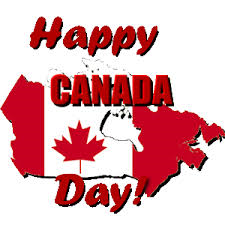 the 2021 Canada Day Contest to follow guidelines provided by the government and by health officials in their respective areas for any multioperator categories.
the 2021 Canada Day Contest to follow guidelines provided by the government and by health officials in their respective areas for any multioperator categories.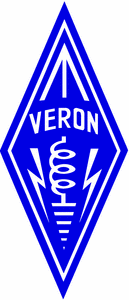 The Netherlands' IARU member-society, VERON, says an additional change of â¬79 (about $96 US) a year being levied on amateur radio repeaters and beacons is detrimental to experimental radio research. Regulator Agentschap Telecom said the higher rate is tied to additional costs, specifically for investigation and surveillance for illegal users at relay stations. VERON has requested cancellation of the new fee.
The Netherlands' IARU member-society, VERON, says an additional change of â¬79 (about $96 US) a year being levied on amateur radio repeaters and beacons is detrimental to experimental radio research. Regulator Agentschap Telecom said the higher rate is tied to additional costs, specifically for investigation and surveillance for illegal users at relay stations. VERON has requested cancellation of the new fee.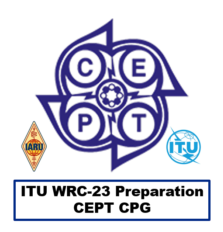 Union (ITU) sponsors the WRC. Meeting on May 21, the IARU worked with CEPT regional telecommunications organizations (RTOs) at the third meeting of the Conference Preparatory Group (CPG). The CPG is the parent group in CEPT that oversees the development of the CEPT Briefs for each WRC-23 agenda item, and reviews the progress of individual project teams under the CPG umbrella.
Union (ITU) sponsors the WRC. Meeting on May 21, the IARU worked with CEPT regional telecommunications organizations (RTOs) at the third meeting of the Conference Preparatory Group (CPG). The CPG is the parent group in CEPT that oversees the development of the CEPT Briefs for each WRC-23 agenda item, and reviews the progress of individual project teams under the CPG umbrella..JPG) the session.
the session.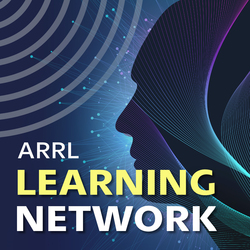 your score, and go over how to attribute your score to your club's aggregate score. This presentation highlights all you need to know to operate as a group for ARRL Field Day 2021.
your score, and go over how to attribute your score to your club's aggregate score. This presentation highlights all you need to know to operate as a group for ARRL Field Day 2021.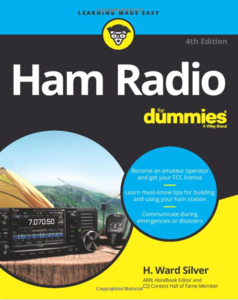 The popular Ham Radio for Dummies 4th ed. by Ward Silver, N0AX, has just been released. The book has been heavily revised to address current technology and operating practices. It may also serve as a training and mentoring tool for newly licensed radio amateurs. It is available from
The popular Ham Radio for Dummies 4th ed. by Ward Silver, N0AX, has just been released. The book has been heavily revised to address current technology and operating practices. It may also serve as a training and mentoring tool for newly licensed radio amateurs. It is available from 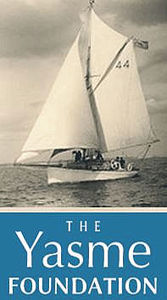 The Board of Directors of the Yasme Foundation has announced these grants: Oscar Pancorvo, OA4AMN, and Pablo Valentin Vazquez, OA4AI, in support of their youth training program in Peru; Maranyundo School in Rwanda for amateur radio books and training materials to help establish a radio club, and Seychelles Amateur Radio Club (SARA) for ongoing support for license exams and fees. Yasme's 2020 grant helped eight residents pass the RSGB Foundation exam. Last week, those eight club members received their S79 call signs.
The Board of Directors of the Yasme Foundation has announced these grants: Oscar Pancorvo, OA4AMN, and Pablo Valentin Vazquez, OA4AI, in support of their youth training program in Peru; Maranyundo School in Rwanda for amateur radio books and training materials to help establish a radio club, and Seychelles Amateur Radio Club (SARA) for ongoing support for license exams and fees. Yasme's 2020 grant helped eight residents pass the RSGB Foundation exam. Last week, those eight club members received their S79 call signs.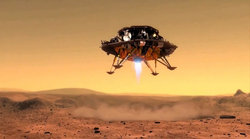 As China's
As China's .jpg) Reinaldo Leandro, YV5AM (ex-YV5AMH, ex-HP1YV, and ex-YN1AM), a diplomat and active International Amateur Radio Union (IARU) Region 2 volunteer, died on May 23. An ARRL Life Member, he was 79. Leandro was elected in 1998 as Region 2 (the Americas) Vice President and served as Region 2 Secretary to fill a vacancy until 2001. He held that post again from 2004 - 2007, until he was elected IARU Region 2 President. After retiring from that role, he continued to serve IARU Region 2 as its Awards Manager. He attended ITU World Radiocommunication Conferences in 2007, 2012, and 2015. The IARU Administrative Council honored him with the Michael J. Owen, VK3KI, Memorial Award in September 2019. An active DXer, he participated in four DXpeditions to Aves Island (YV0) and two to the Ã
land Islands (OH0), as well as activating several Venezuelan islands for Islands On The Air (IOTA). He was on the DXCC Honor Roll (352/339). Leandro held a degree in law. He spent 36 years in the Venezuelan foreign service, with posts in the US, Panama, Finland, Belgium, Argentina, and the Vatican, among others, before his retirement in 1999. -- Thanks to IARU Region 2 and IARU Secretary David Sumner, K1ZZ
Reinaldo Leandro, YV5AM (ex-YV5AMH, ex-HP1YV, and ex-YN1AM), a diplomat and active International Amateur Radio Union (IARU) Region 2 volunteer, died on May 23. An ARRL Life Member, he was 79. Leandro was elected in 1998 as Region 2 (the Americas) Vice President and served as Region 2 Secretary to fill a vacancy until 2001. He held that post again from 2004 - 2007, until he was elected IARU Region 2 President. After retiring from that role, he continued to serve IARU Region 2 as its Awards Manager. He attended ITU World Radiocommunication Conferences in 2007, 2012, and 2015. The IARU Administrative Council honored him with the Michael J. Owen, VK3KI, Memorial Award in September 2019. An active DXer, he participated in four DXpeditions to Aves Island (YV0) and two to the Ã
land Islands (OH0), as well as activating several Venezuelan islands for Islands On The Air (IOTA). He was on the DXCC Honor Roll (352/339). Leandro held a degree in law. He spent 36 years in the Venezuelan foreign service, with posts in the US, Panama, Finland, Belgium, Argentina, and the Vatican, among others, before his retirement in 1999. -- Thanks to IARU Region 2 and IARU Secretary David Sumner, K1ZZ(1).jpg) Former AMSAT Board of Directors member Andy MacAllister, W5ACM, of Houston, Texas, died on May 19 after a brief illness. An ARRL and AMSAT Life Member, he was 68. MacAllister had worked at NASA and was a member of the Johnson Space Center and Brazos Valley Amateur Radio Clubs. More recently, he was the Chief Engineer for Rice University's radio station KTRU. "Andy and I had a great time at many AMSAT symposiums, where we would work satellites from parking lots of restaurants or outside a hotel," recounted Bruce Paige, KK5DO, an AMSAT Board member who shared duties with MacAllister on the Houston AMSAT Net. "During the AMSAT Symposium in 2016, we worked each other from the deck of the cruise ship when we were standing about 3 feet from each other." Paige notes that MacAllister gave presentations and demonstrations at many hamfests and conventions. He also initiated dozens of ham radio balloon launches. The family has requested that donations in MacAllister's name be made to
Former AMSAT Board of Directors member Andy MacAllister, W5ACM, of Houston, Texas, died on May 19 after a brief illness. An ARRL and AMSAT Life Member, he was 68. MacAllister had worked at NASA and was a member of the Johnson Space Center and Brazos Valley Amateur Radio Clubs. More recently, he was the Chief Engineer for Rice University's radio station KTRU. "Andy and I had a great time at many AMSAT symposiums, where we would work satellites from parking lots of restaurants or outside a hotel," recounted Bruce Paige, KK5DO, an AMSAT Board member who shared duties with MacAllister on the Houston AMSAT Net. "During the AMSAT Symposium in 2016, we worked each other from the deck of the cruise ship when we were standing about 3 feet from each other." Paige notes that MacAllister gave presentations and demonstrations at many hamfests and conventions. He also initiated dozens of ham radio balloon launches. The family has requested that donations in MacAllister's name be made to 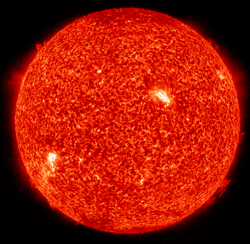 Predicted solar flux over the next month is 75 on June 3 - 5; 70 on June 6 - 10; 76 on June 11; 78 on June 12 - 15; 80 on June 16 - 18; 78 on June 19 - 22; 76, 75, and 76 on June 23 - 25; 72 on June 26 - July 5, and 73 and 75 on July 6 - 7. Solar flux may rise to 80 on July 13 - 15.
Predicted solar flux over the next month is 75 on June 3 - 5; 70 on June 6 - 10; 76 on June 11; 78 on June 12 - 15; 80 on June 16 - 18; 78 on June 19 - 22; 76, 75, and 76 on June 23 - 25; 72 on June 26 - July 5, and 73 and 75 on July 6 - 7. Solar flux may rise to 80 on July 13 - 15.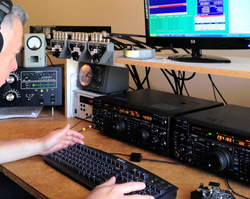 June 5 -- VK Shires Contest (CW, phone)
June 5 -- VK Shires Contest (CW, phone).jpg)








